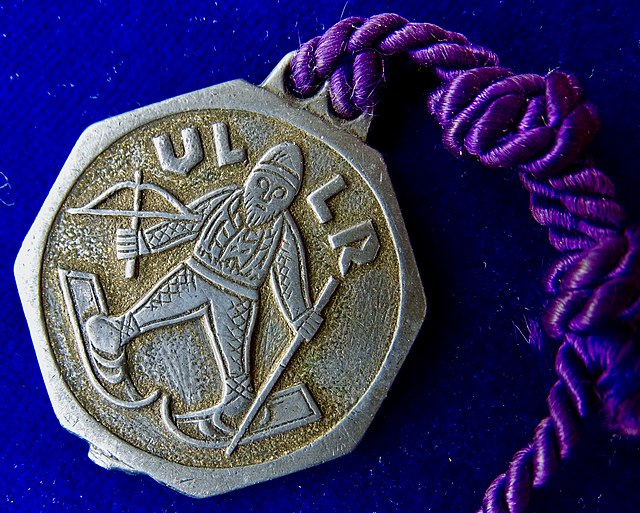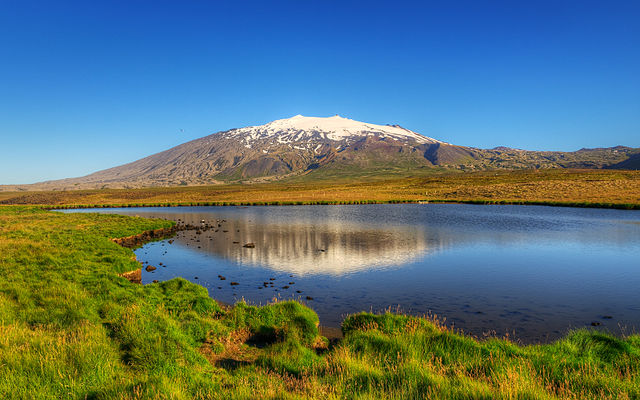In Norse mythology, Ullr is a god associated with skiing. Although literary attestations of Ullr are sparse, evidence including relatively ancient place-name evidence from Scandinavia suggests that he was a major god in earlier Germanic paganism. Proto-Germanic *wulþuz ('glory') appears to have been an important concept of which his name is a reflex. The word appears as owlþu- on the 3rd-century Thorsberg chape.
Ollerus traverses the sea on his magic bone; 16th-century woodcut
Illustration from an 18th-century Icelandic manuscript showing Ullr on his skis and with his bow
Early 20th-century German lead medal depicting Ullr, Schutzpatron der Skifahrer
Reverse of the same medal
Æsir or ēse are gods in Germanic paganism. In Old Nordic religion and mythology, the precise meaning of the term "Æsir" is debated, with it being able to refer to both the gods in general or specifically to one of the main families of gods, in contrast to the Vanir, with whom they waged war, ultimately leading to a joining of the families. The term can further be used to describe local gods that were believed to live in specific features in the landscape such as fells. In the Old English Wið færstice, the Ēse are referred to, along with elves, as harmful beings that could cause a stabbing pain, although exactly how they were conceived of by the author of the text is unclear.
Æsir gathered around the body of Baldr. Painting by Christoffer Wilhelm Eckersberg 1817
The Eyrarland Statue, typically interpreted as depicting Thor. Thor's riding across the sky is likely reflected in the modern Swedish word for "thunderstorm" - Swedish: åska, deriving from an earlier form meaning "the driving of the áss".
Óðinn throws his spear in the Æsir-Vanir war, illustration by Lorenz Frølich (1895)
Snæfell in Iceland, where according to Barðar saga, Barðr Snæfellsáss became an áss who was worshipped in the region and protected those who lived there.








